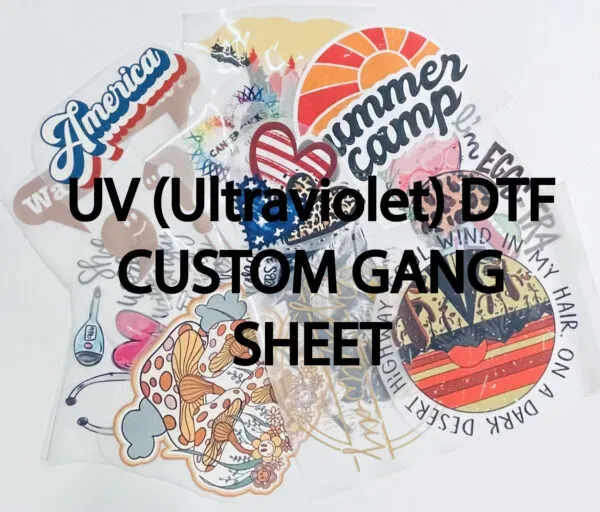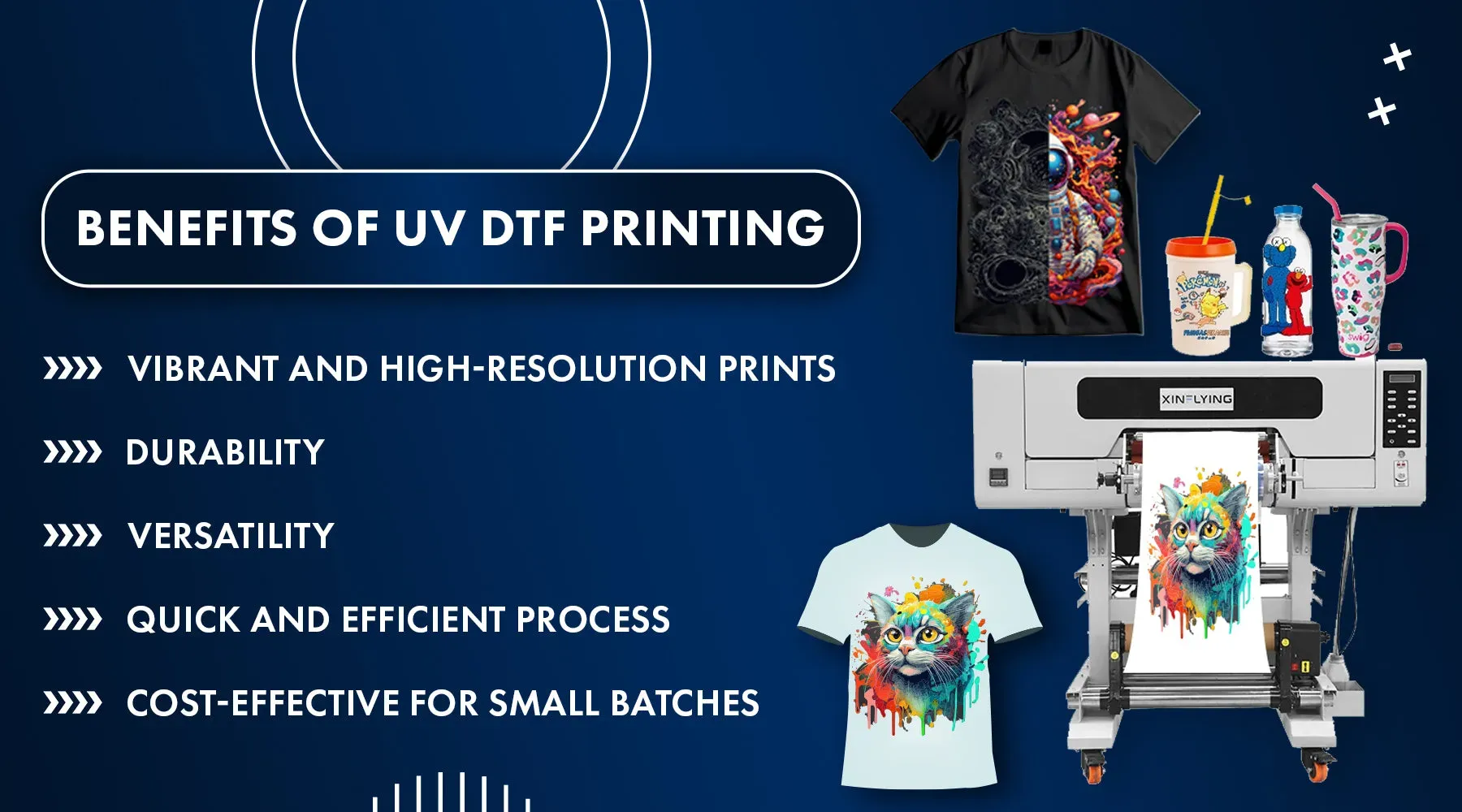UV DTF vs. DTF: Key Differences and Benefits Explained
In the ongoing discussion of UV DTF vs. DTF, businesses and printing professionals must grasp the compelling differences between these two innovative printing techniques. UV DTF printing harnesses the power of ultraviolet light to cure prints, leading to enhanced durability and versatility compared to traditional DTF (Direct-to-Film) methods. This evolution in printing technology not only contributes to superior print quality but also opens up an array of applications across various surfaces. As we explore the advantages of UV DTF, including its rapid production speeds and exceptional clarity, we will provide a comprehensive print quality comparison DTF and UV DTF. Understanding these nuances is essential for anyone looking to optimize their production processes while achieving stunning results.
When evaluating the printing landscape, the distinction between DTF or Direct-to-Film printing and the more advanced UV DTF or Ultraviolet Direct-to-Film process becomes increasingly important. The latter employs cutting-edge UV curing technology, offering benefits that extend far beyond traditional printing methods. In this article, we will delve into various DTF printing techniques, highlighting the efficiency, adaptability, and high-quality output that UV DTF printing methods provide. Beyond aesthetic appeal, recognizing the DTF vs. UV DTF benefits can empower businesses to make informed decisions about their printing needs.
Exploring the Basics of DTF Printing Techniques
DTF printing, or Direct-to-Film printing, is an innovative method used by many businesses to print high-quality designs onto fabric. This process is appreciated for its efficiency and versatility, allowing for vibrant images to be transferred onto various textiles. The initial steps include creating a digital design, which is printed onto a film using specialized inkjet technology. An essential part of DTF is the application of a hot melt powder that allows for a solid bond between the ink and the fabric during the heat transfer process.
In summary, DTF printing techniques are a game-changer in the fashion and textile industries. Their affordability and ease of use make them particularly appealing to small and medium-sized enterprises looking to establish or expand their product line. Additionally, the ability to produce high-resolution images means businesses can offer unique, customized apparel that stands out in a competitive market.
Understanding UV DTF Printing and Its Advantages
UV DTF printing enhances traditional DTF methods by utilizing ultraviolet light to cure inks instantly, making the process quicker and more efficient. This technique allows printers to transfer designs not only onto fabrics but also onto various surfaces, such as plastics and metals. This adaptability is one of the greatest advantages of UV DTF, broadening the potential applications and markets for businesses. Furthermore, UV DTF employs specialized UV inks that dry quickly, allowing for immediate handling without worrying about smudging or fading.
By implementing UV DTF technology, companies can significantly improve their production timelines while providing exceptional print quality. The higher resolution and expanded color gamut achievable with these inks result in sharp detailing and vibrant hues that appeal to customers. As UV DTF continues to evolve, its potential for diverse applications will likely grow, cementing its place in the future of printing technology.
DTF vs. UV DTF: A Comprehensive Print Quality Comparison
When comparing DTF vs. UV DTF, one of the most significant distinctions lies in print quality. UV DTF boasts higher clarity and detail due to the curing technique that locks in the ink’s vibrancy. Users often notice that UV DTF can reproduce intricate designs more faithfully than traditional DTF, which may sometimes lose subtle details during the heat transfer process. Thus, for designs that require precision, UV DTF is the superior choice.
Additionally, the longevity of prints is a crucial factor in the print quality comparison between DTF and UV DTF. UV-cured prints are known for their durability and resistance to wear and fading, making them ideal for items meant for long-term use, such as promotional merchandise and outdoor applications. This durability not only enhances customer satisfaction but also reinforces a brand’s reputation for quality.
Economic Benefits of Choosing DTF Printing Techniques
DTF printing brings a plethora of economic benefits, especially for small businesses. The initial investment in DTF equipment is often lower than for other printing methods, allowing new ventures to enter the market without significant overhead costs. The ease of use associated with DTF techniques also means that businesses can save on labor costs, as fewer specialized skills are necessary to operate the machinery effectively.
Furthermore, DTF allows for quick production times, which can lead to higher turnover rates in sales. With the ability to produce vibrant prints on-demand, companies can respond to customer requests rapidly, adapting their offerings based on market trends. By minimizing wasted material through its precise application, DTF ensures that businesses can maximize their profitability.
The Versatile Applications of UV DTF Printing
The versatility of UV DTF printing distinguishes it from its counterparts, allowing businesses to cater to a wide array of markets. UV DTF doesn’t just limit itself to textiles; it can successfully print on materials ranging from rigid surfaces like wood and metal to flexible options like plastic and leather. This adaptability opens new avenues for product customization, making it an excellent solution for promotional products, personalized gifts, and bespoke packaging.
Moreover, as businesses increasingly look for solutions that can quickly pivot to meet consumer demands, UV DTF stands out by providing faster turnaround times. The ability to print on diverse surfaces combined with instant curing capabilities means that companies can efficiently fulfill orders, reducing lead times significantly. This efficiency is particularly crucial in industries that thrive on rapid product development and release.
Future Trends in DTF and UV DTF Printing Technologies
As the printing industry continues to advance, both DTF and UV DTF technologies are poised for exciting developments. Upcoming trends indicate a clear shift towards increased automation in the printing process, enhancing efficiency and reducing human error. Companies investing in these technologies will have a substantial competitive edge, as automated solutions allow for higher output with consistent quality.
Additionally, the evolution of hybrid printing solutions that integrate DTF, UV DTF, and DTG techniques will likely alter how businesses approach their production strategies. This hybridization reflects the growing need for flexibility, enabling companies to offer diverse products without needing multiple machines or setups. As these technologies improve and adapt, they will fundamentally reshape the printing landscape and open up new opportunities for creativity and innovation.
Frequently Asked Questions
What are the key differences between UV DTF and DTF printing techniques?
The main differences between UV DTF and DTF printing techniques lie in their curing processes and substrate compatibility. UV DTF utilizes ultraviolet light for curing prints instantly, allowing for vibrant colors and sharp details. In contrast, DTF employs a heat transfer process involving a hot melt powder, which might reduce the print quality on intricate designs compared to UV DTF.
What are the advantages of UV DTF over traditional DTF printing?
UV DTF offers several advantages over traditional DTF, including enhanced versatility as it can print on both porous and non-porous surfaces. It provides faster turnaround times since the UV curing process eliminates the need for powders and additional drying, making it a preferred choice for businesses that require efficiency and diversity in their product offerings.
How does the print quality comparison between DTF and UV DTF stand?
When comparing print quality, UV DTF generally outperforms traditional DTF. The UV curing process results in sharper imagery and a broader color gamut, capturing subtle details and gradients better than DTF. Users often report that intricate designs are more accurately reproduced using UV DTF due to its advanced technology.
Can UV DTF printing be used for materials other than textiles?
Yes, UV DTF printing can be used on various materials beyond textiles, including plastics and metals. This versatility makes UV DTF an excellent option for businesses looking to print promotional products, signage, and a variety of substrates, expanding the market applications in comparison to traditional DTF, which mainly focuses on fabrics.
What are the benefits of choosing DTF vs. UV DTF for small businesses?
For small businesses, DTF offers a cost-effective and simple solution ideal for fabric printing, requiring less investment in equipment. However, if they aim to diversify into products like plastics or metals, investing in UV DTF might be strategically beneficial as it provides versatility and fast production capabilities.
What trends are emerging in the UV DTF vs. DTF printing market?
Emerging trends in the UV DTF vs. DTF printing market include the integration of automation to enhance efficiency and the development of hybrid printing systems. These advancements reflect a growing demand for flexible solutions that incorporate both printing methods, catering to a wider range of applications and improving overall production quality.
| Aspect | DTF (Direct-to-Film) | UV DTF (Ultraviolet Direct-to-Film) |
|---|---|---|
| Definition | Printing designs onto a film and heat pressing onto fabric | Printing designs onto a film using UV inks and curing with UV light |
| Process Steps | 1. Design Creation 2. Film Printing 3. Powder Application 4. Transfer | 1. Design Creation 2. Printing on Film 3. UV Curing 4. Transfer |
| Versatility | Mainly fabric printing | Can print on both porous and non-porous surfaces (e.g., plastics, metals) |
| Speed of Production | Slower due to powder application and drying | Faster due to instant curing process |
| Print Quality | Good quality with vibrant colors | Higher quality with sharper details and expanded color gamut |
Summary
In the ongoing discussion of UV DTF vs. DTF, it’s evident that both printing methods serve unique functions in the diverse landscape of the printing industry. UV DTF stands out with its ability to print on a wider variety of surfaces beyond textiles, coupled with the advantages of speed and superior print quality due to UV curing technology. While DTF remains popular for fabric applications because of its cost-effectiveness and ease of use, UV DTF’s versatility appeals to businesses looking to broaden their product offerings, from promotional items to intricate designs on various materials. As technological advancements continue to shape the future of printing, understanding these differences will help businesses make informed decisions aligned with their goals.







